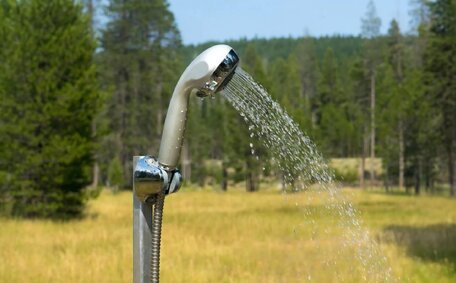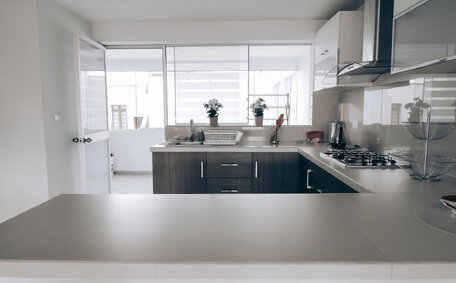Introduction to Relighting a Hot Water System Pilot Light
Gas hot water systems are essential for comfort in Gladesville residences.
Understanding how to relight the pilot light of your gas hot water system is essential for restoring functionality quickly and avoiding frustration. This guide will detail the process of safely relighting your gas hot water system’s pilot light, courtesy of Gladesville Plumbing experts.
Before getting started, it’s critical to follow all safety precautions, including how to turn natural gas sources on and off when working with gas appliances. While relighting a water heater’s pilot light is generally straightforward, inappropriate handling may lead to gas leaks or other issues.
This article provides clear steps for relighting your pilot light and operating water valves; remember to contact a professional if you’re unsure or detect a gas odour.
We’ll cover system access, gas leak checks, proper gas operation, pilot light control settings, ignition methods, and how to restore your water flow.
Leverage the expertise of your local Gladesville Plumbing professionals to swiftly restore your hot water system’s pilot light and functionality.
Safety Precautions When Accessing the Pilot Light
When accessing the pilot light of your hot water system, safety should always be the top priority. Ensure good ventilation around the appliance before beginning, to prevent the risk associated with gas accumulation.
Check carefully for a gas leak with a sniffer or soapy water, ensuring there are no gas leaks by listening and smelling for any signs of escaping gas. If you detect a leak or smell gas, ensure there’s no immediate danger, confirm there’s no gas flow, ensure the gas supply is turned off and wait to ventilate the area before calling a professional.
Ensure you wait five minutes after switching off the gas to attempt lighting the pilot, giving time for gas fumes to dissipate. Never use tools or excessive force when you turn knob on the gas control, as this risks expensive damage.
Having the right tools, such as a long-reach lighter and flashlight, aids safe access to the pilot light. Never have any ignition sources lit as you are accessing the pilot area, and always ensure the gas off before proceeding. Work slowly and double check all fittings are secure.
After safety measures are observed, check that the pilot light ignites correctly. However, during the process of relighting pilot, if at any point you feel unsure or still notice the smell of gas, call a licenced gas fitter for assistance.
Locating and Accessing the Pilot Light
Locating the pilot light requires accessing your gas hot water system’s main burner compartment. Typically, this involves detaching an outer panel by hand from your water heater—no tools needed.
On most residential systems, this access panel is down low near the base. It may be hidden behind a removable cover, or under a flap you can undo and swing open. Take care when removing any fittings.
Once open, you should see the main burner unit inside, including the pilot light gas. The pilot will be a small tube coming off the side or underneath the main burner ring of the gas water heater. It’s easily identifiable by its size and blue flame when lit.
Make sure this compartment is clear of any obstructions that could affect your water heater’s functionality and that you have ample room to work. Have your flashlight ready to clearly view the pilot assembly before attempting to relight it.
Setting the Gas Control Knob to 'Pilot’
A key step is setting the gas control knob to the 'pilot’ position when lighting your water heater’s pilot light. This ensures that your water heater uses gas to flow only to the pilot light assembly, not the main burner.
Start by ensuring any connected gas valve is set to the on/pilot position, and double-check with your main gas isolation valve. Allow a couple of minutes for any residual gas fumes to dissipate before continuing.
Locate the gas control knob, usually found near the base of the unit, and turn control knob off by rotating it clockwise to secure your pilot light. Push the knob in gently, if needed, and continue rotating until it stops or clicks into position. This will be the 'pilot’ position.
With the knob set to pilot, you can now attempt to ignite the rheem gas using either a manual lighter wand or electronic ignition button when proceeding with the next steps. Just make sure not to force the control knob past the pilot setting on your water heater.
Manually Igniting the Pilot Flame
With the gas control knob now set to the pilot position, you can initiate to light your Stellar gas pilot flame manually rather than electronically. Ensure you have a long-reach lighter ready to light pilot for this step.
Push the control knob down fully and maintain pressure to relight pilot. While continuing to hold the knob down, use your long lighter to relight your Rheem pilot flame port. As you do this, you will see pilot light up with a small flame emitting a steady blue hue.
Press the knob firmly for 30 seconds after the pilot is steadily lit to ensure flame stability. This allows the thermocouple to heat up so the flame stays alight once released.
If the pilot extinguishes upon knob release, pause to let gas clear before reattempting ignition, pressing the knob longer. Refer to your hot water system’s manual as ignition methods can vary across brands.
When the pilot flame stays lit, turn the gas control knob counter-clockwise from 'pilot’ to 'on’. This will allow gas to flow to the main burner and get your Rheem hot water system firing up, restoring normal operation.
Using Electronic Ignition to Light the Pilot
Many modern Rheem Stellar gas hot water systems now feature electronic ignition, removing the need to manually light your gas pilot light. This uses an igniter button or switch found on the gas control valve or unit exterior to trigger a spark and light the pilot flame.
Begin by turning the gas control knob to the off position and then to pilot, holding it for 30 seconds. Then locate the electronic igniter button, which may be red or silver in colour. Press and hold the igniter button fully, as you would when turning a gas knob.
You should hear a clicking sound as the electric spark attempts to ignite the pilot. Continue holding the button until the pilot flame appears, then hold for an additional 30 seconds before releasing. If the pilot goes out, wait 5 minutes before trying again.
Consult your water heater’s manual, as lighting procedures can differ and may require specific steps to relight and reset the control knob.
If the gas electric ignition fails to produce a flame and the light goes out despite repeated attempts, it’s possible an issue with the power supply or igniter wiring may require a technician’s inspection. Get in touch with the friendly professionals at Gladesville Plumbing on 1300 349 338 for any additional assistance.
Ensuring the Pilot Flame Remains Lit
After successfully igniting the pilot flame on your tankless water system, whether manually or with electronic ignition, there are a few important steps to ensure it remains lit when hot water is in demand.
Keep pressure on the control knob for 30 seconds after confirming a steady, bright blue pilot flame. This allows time for the thermocouple to fully heat up.
Gently release the control knob and verify that the pilot light remains stable and lit. If the pilot goes out at this point, repeat the ignition process, holding the knob down for longer.
Once the pilot flame stays lit after releasing the gas control knob, you can now turn it counter-clockwise to the full 'on’ position if required, restoring normal operation. Give your hot water system 5-10 minutes to fully heat up, replacing the cold water and start flowing hot water to taps again.
If the pilot repeatedly goes out and fails to stay lit, this indicates an underlying issue, and you should call Gladesville Plumbing on 1300 349 338 for professional assistance getting your hot water back up reliably.
Turning the Hot Water System On
Once the pilot light is lit and you have confirmed it is burning steadily, the next step is to turn on your hot water system so it begins heating the water again.
With the knob still on 'pilot’ after ignition, switch it on to start heating and ensure hot water availability. For most residential systems, you’ll feel it stop or hear a click when reaching the on position.
Check that the main burner ignites and starts burning with a bright blue flame. Run the system for 5-10 minutes and verify proper heating by testing a hot water tap.
Adjust the control knob or temperature dial to attain the intended hot water temperature. And just like that, your hot water system should be running normally again!
For leaks, odours, or lack of hot water, shut the system down and call Gladesville Plumbing on 1300 349 338 for quick help.
Troubleshooting Issues Relighting the Pilot
If you encounter difficulties with the pilot light going out or struggling to ignite, there are several critical points to consider:
Verify Gas Supply
Check that the gas line shutoff valves are completely open to ensure gas is reaching the water heater. If shut off at the mains or tank when hot, open valves fully.
Clean Flame Sensor
Use steel wool to gently clean the end of the flame sensor rod. This allows it to better detect the pilot flame.
Check Thermocouple
Make sure the thermocouple is properly connected at both ends and shows continuity on a multimeter. If damaged, the thermocouple needs replacement.
Assess Ignition Electrode
Inspect the ignition electrode and its ceramic insulator for any damage and replace if necessary.
Should the pilot continue to malfunction, contact Gladesville Plumbing on 1300 349 338 for professional help restoring your hot water.
Knowing When to Call a Professional
While relighting a hot water system is usually straightforward, certain situations necessitate calling a professional for safety and effectiveness.
The friendly, licenced technicians at Gladesville Plumbing have the expertise to quickly diagnose and fix issues with your hot water heat pump or pilot light. If at any point you:
- Smell gas
- Notice leaks
- Can’t get the pilot to ignite or stay lit despite troubleshooting
- Possess an ageing unit needing maintenance
Contact Gladesville Plumbing immediately at 1300 349 338 if needed; our 24/7 emergency service includes no extra charge for after hours or holidays.
Our fully-qualified team, with over a decade of service including the Gold Coast, specialises in:
- Gas fitting
- Hot water repairs
- Pilot light servicing
- Thermocouple and valve replacements
- Rheem, Vulcan and all major brands
Rely on Gladesville Plumbing for reliable, swift, and affordable assistance with your hot water systems. For appointments, call 1300 349 338 or email [email protected].






